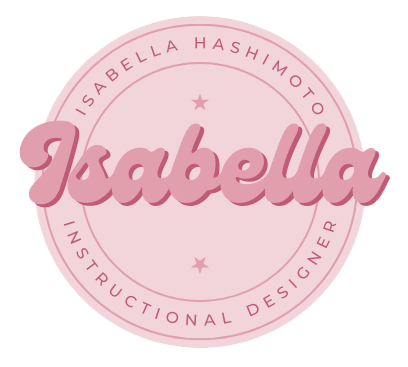Featured Project
Implementing Your Empathy Training
This eLearning project is designed for tech company managers to practice empathetic engagement with new-hires through scenario-based learning.
Audience: Organizational Leaders
Responsibilities: Instructional Design, eLearning Development, Graphic Design, Action Mapping, Script Writing, Storyboarding
Tools Used: Articulate Storyline 360, Adobe Illustrator, Adobe Firefly, Figma, MindMeister, Google Docs
My Process
After selecting the scenario-based eLearning solution, I created an action map outlining the necessary steps for managers to reduce turnover. Subsequently, I crafted a text-based storyboard with a complete script, visuals, and programming notes. Following feedback, I developed a style guide and visual mockups. I then created an interactive prototype, refining it through iterative feedback rounds before finalizing the project.
Problem
The conceptual client, QuantumSynergy Technologies, a major domestic software company, aims to expand globally in the coming years. However, there has been a significant increase in new-hire turnover rates over the last 18 months.
Amidst a continuous rise in turnover rates, the client identified empathetic leadership training for management as the key solution. Despite all managers participating in the training, the client still experienced ongoing new-hire losses.
I proposed further analysis of the disconnect between training and day-to-day interactions.
Solution
I suggested a job-aid with an acronym for active listening to be shared with managers as one solution. However, measuring its impact is challenging.
Another proposal was ongoing mentoring between new-hires and seasoned employees. This is beneficial for new-hires but not guaranteed to enhance managers' skills unless they become mentors.
After analyzing the key actions needed to achieve the project goal, I determined that an online, scenario-based learning solution for practicing empathetic verbal responses would enhance training effectiveness and reduce turnover rates. Following Knowles’s adult learning principles, this low-stakes practice boosts managers' comfort in responding empathetically and highlights potential consequences for their actions.
Action Mapping
In this project, I served as the Subject Matter Expert, leveraging over a decade of professional experience and researching management best practices. I developed an action map focused on a measurable project goal, with key actions for managers becoming more specific as they branched out. This mapping ensures that all actions align with achieving the project goal.
Text-Based Storyboard
The action map identified four high-priority actions essential for fostering empathy in the workplace. These actions formed the foundation for the realistic scenarios in my eLearning solution.
The storyboard showcases the project's text for client review. Following Keller’s ARCS Model of Motivational Design, each of the three scenarios presents three answer choices - one correct and two distractors - leading to distinct consequences for the audience.
Adhering to Mayer’s Personalization Principle, the storyboard introduces a mentor character available to assist the audience, if desired, in the scenarios. The option for learners to choose whether to access additional information is crucial.
Accessibility features were also included at this crucial planning step.
Visuals
After several iterations on the storyboard, the focus shifted to visual design.
A calm, neutral color scheme, formed the basis for my style guide. After choosing the color scheme, I selected a sleek, modern font to complement it. To ensure accessibility and readability, I tested various color combinations for text boxes and buttons before finalizing them in the style guide.
I created wireframes for my slides, focusing on element spacing and layout for each slide type.
I then designed high-fidelity visual mockups for my slides. Character vectors were manipulated, and AI background images were generated. I opted for an illustrative style with a realistic touch aimed to immerse learners in the environment, and chose to directly involve them in the experience instead of using an illustrated character representation.
Prototype
After receiving feedback on visual elements, I developed an interactive prototype.. The prototype covered the introduction, one full scenario (setup, question choices, result screens), and the introduction of the second scenario.
I developed the prototype to gather feedback on project functionality and flow. I sought reviews from instructional designers at this crucial stage to ensure valuable input. Since my prototype was only designed through the first question, I was able to apply feedback quickly - rather than having to make repeated changes in a fully developed experience.
Full Development
Using feedback on the prototype, I was able to move on to full development. My most important goal was to make this project as accessible and engaging as possible. With that, I ensured alt text was made available for images and cleaned up the objects picked up by an E-reader.
Results and Takeaways
By truly practicing the “progress > perfection” mantra of a growth mindset, I came away from this project with a much greater understanding of my own ID skills.
Action Mapping: Action Mapping helped me pinpoint a measurable goal for the issue.
New Programs: Adobe Illustrator, for both the mockups and customizing the vectors for my project’s visuals, was a skill I did not have before starting this project. This was also my first time using Figma and Mindmeister - both web based programs streamlined the process.
Articulate Storyline: Knowing that I wanted the dialogue of this project to look as natural as possible, I knew there would be a lot of timeline manipulation. The meticulous design behind each seamless slide transition, really tested my ability to see every detail.







